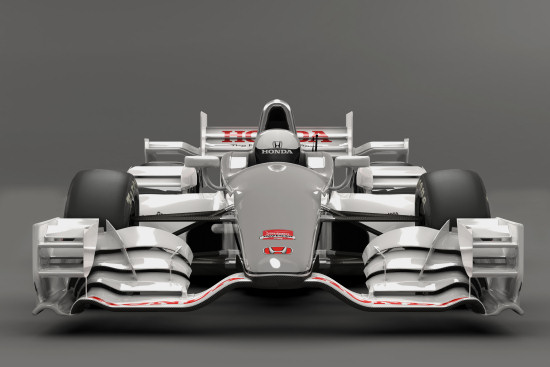The Way It Is/ Creating the world's ugliest race carsby Gordon Kirby |
 Hats off, first of all, to Nigel Bennett for airing his very clear, straightforward ideas for improving open-wheel racing in this space last week. I haven't heard from anyone who disagrees with Nigel's concept. Most people wholeheartedly endorse his ideas and would love to see them implemented.
Hats off, first of all, to Nigel Bennett for airing his very clear, straightforward ideas for improving open-wheel racing in this space last week. I haven't heard from anyone who disagrees with Nigel's concept. Most people wholeheartedly endorse his ideas and would love to see them implemented.
An essential part of Bennett's thinking is about aesthetics and the art of engineering. Like most people I know, Nigel believes in producing a car that is as beautiful as it is effective. Many of us are convinced that the declining aesthetic appeal of so many of today's race cars--Formula 1 and Indy cars in particular--plays a big role in open-wheel racing's unhappy overall downhill slide. So allow me to repeat a few of Bennett's words from last week, starting with the aesthetics. "Airplanes are sleek the way racing cars used to be," Nigel said. "They don't have bits stuck all over them like all the little bits and pieces stuck on the front wings of today's Formula 1 and Indy cars. "Yes, they're producing phenomenal aerodynamic performance figures but none of that stuff bares any relationship to anything else in the world. There's no place for any of that stuff on road cars and it doesn't look nice." Bennett also made an important point about the ridiculous amounts of money lavished by the top F1 teams on the tiny details of these often ugly aerodynamic bits.  © Honda Racing/HPD "The cars are incredibly complicated. They're beautifully made but unbelievably complicated with all kinds of stuff that's largely unnecessary and unappreciated by the fans and media. It makes for paying jobs for the young engineers but as far as the general public is concerned I don't think there's much interest in any of that. It's just jobs for the young engineers to spend the money they've been given." And when so much of the stuff produced is unattractive and cluttered if not downright ugly, these engineers should hang their heads in shame. Sadly, this is particularly true with this year's IndyCar aero kits, especially Honda's 'Venetian blind' kit. To me, and many others, the aero kits have made an ugly car even uglier. In most ways Formula 1 and IndyCar are at opposite ends of the spectrum, facing very different challenges, but they share the same affliction for ugliness. Many people lament the loss of CART's clean, elegant Indy cars of the nineteen-eighties and nineties--Nigel Bennett's era--and would love to see a revival of such beauty in contrast to the hideously unattractive line of Dallara Indy cars we've seen in recent years. Unless this disease of ugliness can be cured I cannot see how there will be any revival in interest, either globally for Formula 1, or domestically for IndyCar. Of course, as driver after driver has commented, IndyCar has also produced a machine that's stuck to the ground more than ever. As a result passing was very difficult in St. Pete and the race was littered with full-course yellows as aero kit bits went flying amid the inevitable barging matches with such an over-downforced, under-powered car. And as expected, the race was dominated by the Penske team which swept the top four places in qualifying and finished first, second, fourth and fifth. For years, most drivers have campaigned for more power rather than more downforce. They want to race powerful cars that are a big challenge to drive and are capable of passing back and forth in spectacular fashion rather than running around jammed together in restrictor plate-like packs. Many of the sport's greatest drivers have repeatedly declared their belief that more power and less downforce is the way to go. Former champion Paul Tracy, now an NBCSports commentator, recently expressed the same opinion. But the tide continues to flow in the opposite direction on all fronts. The more we plead for change, the less probable any of it seems of happening. Most sanctioning bodies' heads are stuck firmly in the sand. They have forgotten motor racing's roots and motivating forces and as a result, certainly in IndyCar's case, a once-great sport continues on a fecklessly inexorable downhill slide. |
|
Auto Racing ~ Gordon Kirby
Copyright ~ All Rights Reserved |
